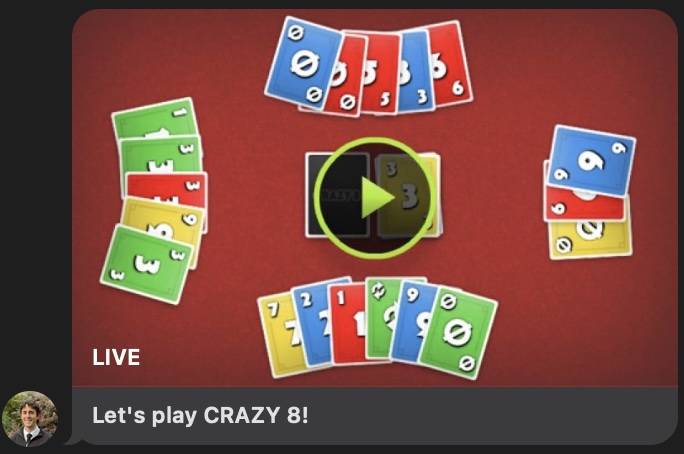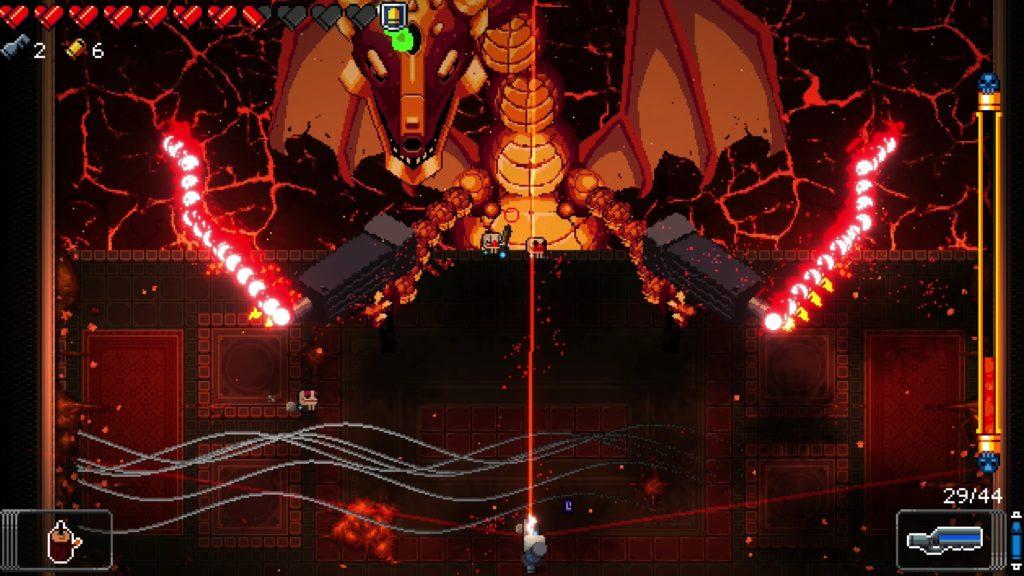I played Crazy 8s on GamePigeon for this week’s critical play. This spinoff of a card game classic features similar game mechanics to Uno, another classic. While the objective of GamePigeon’s Crazy 8s is the same as if you were playing with a normal deck of cards, this version supports additional attack cards such as skip, reverse, draw 2, and draw 4 + choose the card color. As such, the game mechanics yield a synonymous experience to playing Uno with friends. I played this game for ~10 rounds or so with my teammates on our bus ride down to LA. Since we didn’t have an area where we could play with a physical deck, this iMessage-enabled online game allowed us to play from different parts of the bus (plus the additional teammate who was playing from back on campus).

The game I’m designing with my team for the first project is a bit of a love child between Jenga, Uno/Crazy 8s, and Exploding Kittens. Players take turns stacking objects into a tower in the middle of the playing area until one unlucky player places an object that makes the tower fall. As such, our game is a non-zero-sum game similar to Jenga. However, to make this game more explorative and interactive with the surrounding environment, each player has a hand of action cards that direct them to find and stack a specific kind of object from the surrounding environment. From external feedback we received during the play-test in class on Tuesday plus conversations within our group, we’d like to simplify the mechanics of the action cards. Although there’s no tower-building aspect of Crazy 8s, our game has parallels between the discard pile and the play dynamics of cooperation v. competition, risk & reward, and resource management that I wanted to analyze.
Although Crazy 8s has relatively simple game mechanics, we found ourselves playing over 10 rounds. In part, since each win you get is displayed next to your PFP, it drove our competitive side to see how many wins each of us could get. In another sense, the hand that you started with was typically highly correlated to how well you’d do in the round. For example, my teammate, Byron, started with a ridiculously good hand and easily won this because he got every special card in the game (2 draw 4s, 2 skips, a draw 2, and a reverse).

I on the other hand struggled to get rid of my cards in the beginning few rounds because I started with all normal, number cards which are much more constrained in when you can play them (relative to the color/number of the top card in the discard pile). Because there’s a significantly lower proportion of “special cards”, Crazy 8s has a noticeable randomness emergent dynamic in the game play. In other words, the hand you’re dealt tends to correlate with how well you’ll do that round. Therefore, this game feels very re-playable, an element that we want to incorporate into the game my team is designing , Kitten Klimb. In our first prototype, we included a much higher proportion of “specialty cards” relative to what I saw in Crazy 8s. More specifically, for Kitten Klimb, each player starts with a hand of cards that fall into the three action categories of stack, attack, or defend. After playing Crazy 8s for a while, we could simplify our “Nope” card and “skip” cards into one as well as decrease the total number of specialty cards to a similar proportion to Crazy 8s. Implementing this change simplifies the card mechanics and introduces greater variability in the quality of players’ starting hands. This increased randomness helps level the playing field, reducing the impact of differences in age or prior experience. In my experience with Crazy Eights, such mechanics effectively minimized skill-gaps among players created a more normal distribution of wins among players (which makes it all the more competitive! The image below shows how after 10ish rounds that most of us were in the neighborhood of ~2 wins).





